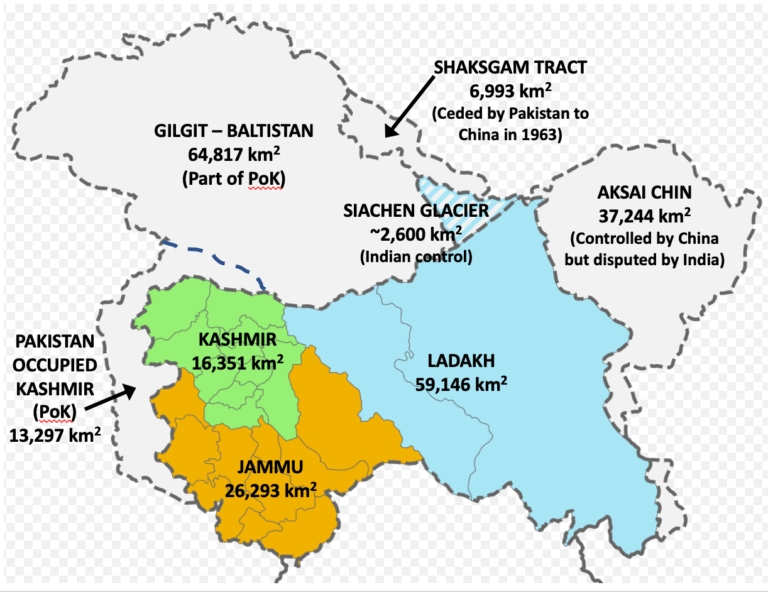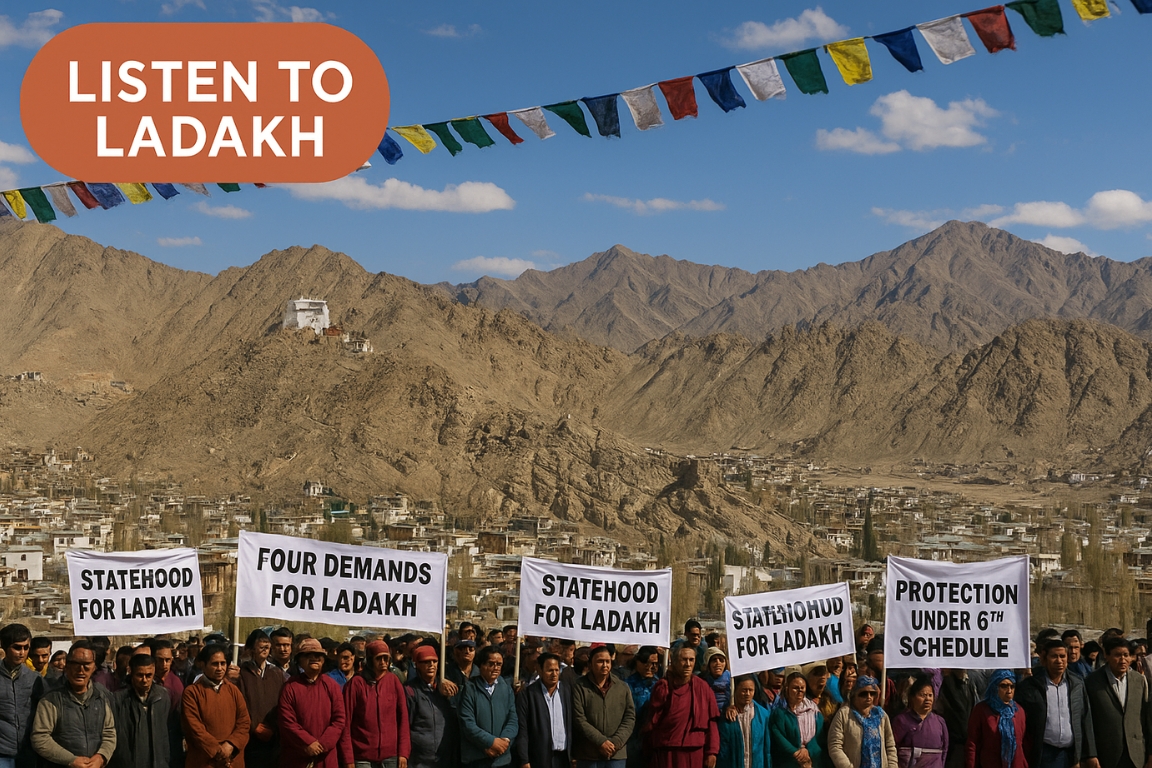Since the grant of Union Territory (UT) status to Ladakh in 2019, local discontent has grown over governance, ecological protection, and constitutional safeguards.
Background
- Ladakh has historically symbolized loyalty, sacrifice, and national integration.
- Soldiers from the region have defended India in wars, including 1947–48, 1962, and the 1999 Kargil War.
- Cultural diversity, with monasteries, mosques, and local traditions, reflects Ladakh’s unique identity.

Timeline of Discontent
- 2019: UT status granted post-Article 370 abrogation; initially welcomed in Leh, resisted in Kargil.
- 2020–21: Concerns about land alienation, demographic change, and ecological degradation emerge; Sixth Schedule inclusion demanded.
- 2021: Formation of Leh Apex Body (Buddhist leaders) and Kargil Democratic Alliance (Muslim leaders), highlighting inter-community collaboration.
- 2022–23: Protests demand empowered Hill Councils, job reservation, and land protection.
- 2024–25: Buddhist–Muslim solidarity strengthens; calls grow for legislative assembly or statehood.
Reasons for Discontent
- Loss of Legislative Power: UT status reduced local governance, centralizing authority.
- Fear of Marginalisation: Concerns over jobs, land rights, and ecological protection without Sixth Schedule safeguards.
- Geostrategic Sensitivity: Proximity to Chinese and Pakistani borders increases stakes of dissatisfaction.
Community Mobilization
- Leh Apex Body and Kargil Democratic Alliance represent first cross-community political cooperation.
- Shared goals: Strengthening Hill Councils, ensuring local representation, and protecting culture and environment.
- Grassroots engagement: Movements actively seek dialogue with the Centre.
Challenges for Delhi
- Triangular Balance: Development, ecological protection, and local empowerment must be reconciled.
- Prudent Engagement: Timely, quiet consultations with local stakeholders to prevent alienation.
- Strategic Imperative: Addressing demands safeguards a sensitive frontier region.
National and Strategic Significance
- Security: Decisions impact the Line of Actual Control and Pakistan frontiers.
- Democratic Ethos: Empowering Ladakh demonstrates India’s capacity for federalism with strategic caution.
- Symbolism: The Centre’s response sets precedent for other regions seeking autonomy.
Conclusion
Ladakh has remained loyal to India, but its current grievances require careful handling. By combining development, ecological conservation, and democratic empowerment, Delhi can reinforce trust and secure this strategically important frontier.





